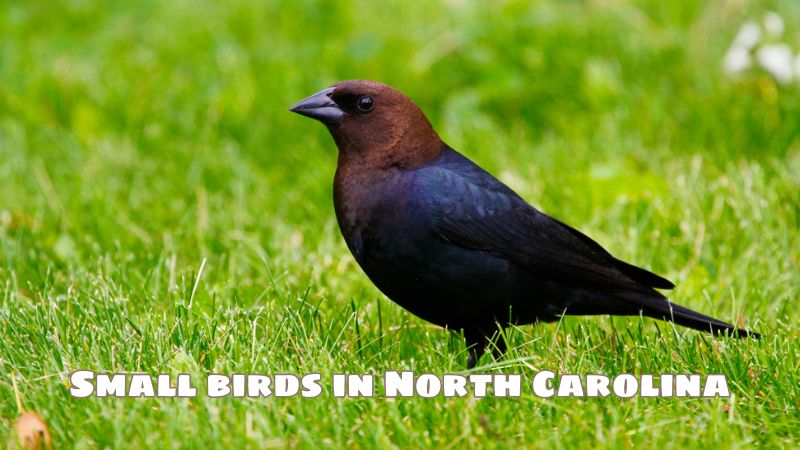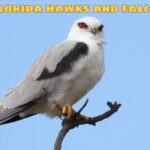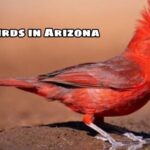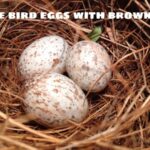I am excited to share my guide to the small birds in North Carolina. I have prepared custom identification photos and gathered a wealth of information on each of the most commonly reported birds at grasshopper feeders in the Old North State; including their songs and calls. Check out what I have compiled with birdsofjoy.com!
What birds visit backyard feeders in North Carolina?
Birds that visit backyard bird feeders in North Carolina are primarily sparrows, finches, and their allies. This group also includes siskins, goldfinches, juncos, and long-tailed finches.
Fewer species are included in other backyard bird groups. Besides the blackbirds, which include four species, the remaining groups include only two or one species.
Bird groups and number of species in each group
Sparrows, finches, and their allies: 10 species.
Blackbirds: 3 species.
Mockingbirds and nightingales: 2 species.
Bluebirds and nightingales: 2 species.
Woodpeckers: 2 species.
Jaws and crows: 2 species.
Sparrows and finches: 2 species.
Woodpeckers: 2 species.
Robins: 2 species.
Babblers: 1 species.
Doves: 1 species.
Starlings: 1
Most birds visiting North Carolina bird feeders are seed and grain feeders. The second largest group consists of insectivores. Generalists and species that combine fruits and insects are represented in smaller numbers.
Most of the 488 bird species recorded in North Carolina are insectivores. It would be expected that most birds visiting bird feeders in the state are also insectivores (specialists in eating insects). However, grain and seed feeders make up the largest group.
This mismatch may be explained in part by the natural history and habitat use of the birds. Insectivorous birds have stereotyped foraging strategies and morphological adaptations for capturing insects in the air or on specific surfaces. These birds may not consider bird feeders as a food source.
Other birds use habitat types that make it difficult for them to encounter bird feeders (e.g., forest canopy).
Birds that visit feeders are more flexible and adaptable to foraging in a variety of ways and habitats; these birds tend to be more generalists.
Another reason for the lack of insect-eating representation at feeders is that providing insects is more complex and expensive than providing bird seeds. There is no doubt that providing insect-eating birds will attract more birds to your feeder.
Backyard bird feeders in North Carolina are broken down by their primary diet.
Seeds & Grains: 40%
Insects: 30%
Fruits & Insects: 14%
Nutritionists: 13%
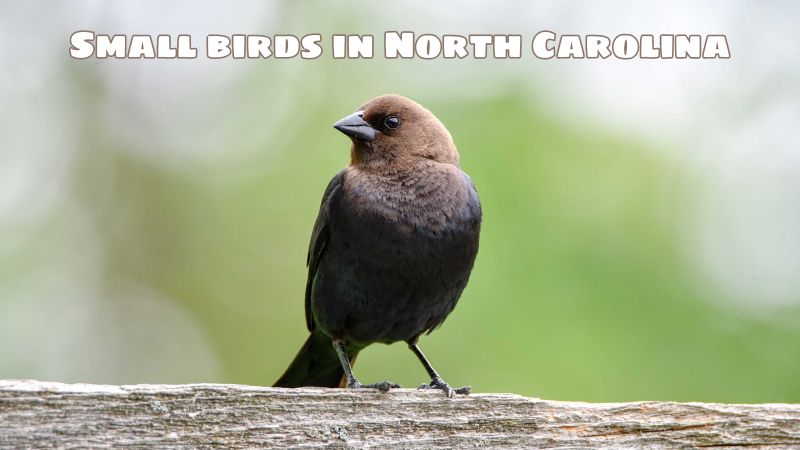
Birds visit feeder for small birds in north carolina
Cardinal of the North
Identification:The male Northern Cardinal (Cardinalis cardinalis) is red with a prominent crest and long tail. The female is warm brown with red on the wings and tail. Juveniles resemble the female.
Food:Eat: Attract cardinals with black oil sunflower seeds, hulled sunflower seeds, safflower, cracked corn, peanuts, millet, and milo.
Feeders:They prefer large tube, large funnel, and pedestal feeders. They also feed on the ground.
Frequency:Northern Cardinals visit 95.6% of backyard bird feeders in North Carolina in groups of 2.6 individuals.
Behavior:Northern Cardinals can be aggressive toward smaller birds but are attacked by blue jays, woodpeckers, starlings, and larger birds.
Backyard: Prefers lots of shrubs and tall trees, but will visit any yard with adequate vegetation in or near it.
Nest: Northern Cardinals build a cup-shaped nest on a small branch of a tree, shrub, or vine, 1-15 feet off the ground.
Breeding season: Northern Cardinals breed from March to mid-September.
Breeding period: Northern Cardinals lay 2-5 grayish-white to pale yellow eggs with light brown spots. It takes about 22 days from egg laying (incubation period 12 days, nesting period 10 days) to fledging.
Lifespan: Northern Cardinals live at least 15 years and nine months.
House sparrow
Identification:The male house sparrow (Haemorhous mexicanus) has a red head and chest, contrasting with the gray-brown of the rest of the body. Some males are yellow instead of red. Females are gray-brown with black stripes on the back, chest, and belly.
Food:Attract house sparrows with black oil sunflower seeds, shelled sunflower seeds, safflower, and nyjer.
Feeders:It is suitable for large tube feeders, small and large hoppers, and pedestal feeders.
Frequency:House sparrows visit 89.7% of backyard bird feeders in North Carolina in groups of 2.9 individuals. Sometimes much larger flocks.
Behavior:House sparrows are quite submissive even to smaller birds. They usually interact well with other birds at feeders.
Backyard:Adaptable to human-made habitats and common in suburban areas.
Nest: The House Sparrow builds an open cup surrounded by branches, cacti, and rock ledges. It also nests in light fixtures, home decor, hanging pots, and ledges.
Breeding season: The House Sparrow breeds from late March to early August.
Breeding period: The House Sparrow lays 2-6 greenish-white eggs with brown spots. It takes about 29 days from egg laying (incubation period 13 days, nesting period 16 days) until the chicks are adults.
Lifespan: The House Sparrow has a minimum lifespan of 11 years and 7 months.
Purple Sparrow
Identification: The male purple finch (Haemorhous purpureus) is raspberry red, darker on the head and breast. The female is brown, heavily streaked below with a patterned head.
Food: Attract purple finch with black oil sunflower seeds, shelled sunflower seeds, nyjer seeds, and millet.
Feeders: It is suitable for large and small tube feeders. It also uses hopper and pedestal feeders.
Regularity: Purple finch visits 59.1% of backyard bird feeders in North Carolina in groups of 3.1 individuals.
Behavior: Purple finch are not aggressive at feeders. Purple finch are semi-nomadic birds that may visit your feeder one year but not the next.
Backyard: Purple finch prefers forest edges, especially coniferous forests. Feeders near forests are more likely to attract purple finch.
Nest: It builds a cup-shaped nest on the branches of coniferous or deciduous trees. The height from the ground varies from 5 to 50 feet above the ground.
Breeding season: The Purple Sparrow breeds from April to August.
Reproduction period: The Purple Sparrow lays 2-7 dark-spotted gray eggs. It takes about 26 days from egg laying (incubation period 12 days, nesting period 14 days) until the chicks are adults.
Lifespan: The Purple Sparrow lives at least 12 years and 8 months.
White-throated sparrow
Identification:The White-throated Sparrow (Zonotichia albicollis) has a patterned head with a yellow patch in front of the eyes. This sparrow has two plumage forms: white-striped and brown-striped.
Food:Attract White-throated Sparrows with black oil sunflower seeds, hulled sunflower seeds, safflower, cracked corn, peanuts, millet, and milo.
Feeders:It is primarily a ground feeder, eating bird seed spilled from elevated feeders. It also uses pedestal feeders.
Frequency:White-throated Sparrows visit <48% or less of backyard bird feeders in North Carolina in groups of 1.5 individuals.
Behavior:Not an aggressive bird that is easily displaced by more aggressive birds.
Backyard:White-throated Sparrows forage in semi-open areas with some vegetation. Prefer backyards with vegetation near feeders.
Nest:White-throated Sparrows build cup-shaped nests on or near the ground.
Breeding season: White-throated sparrows breed from late May to mid-August.
Breeding period: White-throated sparrows lay 2-6 pale green eggs with chestnut brown spots. It takes about 23 days from egg laying (incubation period 12 days, nesting period 11 days) until the chicks are adults.
Lifespan: White-throated sparrows live at least 14 years and 11 months.
East Towhee
Identification:The male Eastern Towhee (Pipilo erythrophthalmus) has a black hood and back while the female is brown instead of black. Both sexes have a white belly with dark brown sides.
Food:Elect the Eastern Towhee with black oil sunflower seeds, hulled sunflower seeds, safflower, cracked corn, peanuts, millet, and milo.
Feeders:This towhee is primarily a ground feeder, taking spilled seed from below elevated feeders. It uses platform feeders and less frequently hopper feeders.
Frequency:Eastern towhees visit 60.4% of backyard bird feeders in North Carolina in groups of 1.4 individuals.
Behavior:Eastern towhees forage primarily on the ground with other ground-feeding birds, and are generally not aggressive toward each other.
Backyard: This bird is found in low, dense vegetation and is reluctant to venture far. It is more likely to visit backyard feeders adjacent to this type of habitat.
Nest: The Eastern Towhee nests in leaf litter on the ground. It rarely nests in ground vines.
Breeding season: The Eastern Towhee breeds from about May to mid-August.
Breeding period: It lays 2-6 cream or gray eggs with red spots. It takes about 24 days from egg laying (incubation 12 days, nesting 12 days) to fledging.
Lifespan: The Eastern Towhee lives for at least nine years.
What kind of bird feeder should I buy in North Carolina?
The preferred type of bird feeder in North Carolina is a pedestal feeder, especially if you are new to backyard birding.
I did a simple analysis of the preferred type of feeder for backyard birds. The results apply to North Carolina and other states since these birds have a wide range in North America.
According to the analysis data, most birds (92.5%) use pedestal feeders, followed by large funnel feeders (64.8%). Many birds (32%) are comfortable feeding on the ground.
The analysis included a breakdown of bird species by type of bird feeder used. The use of bird feeders comes from reports submitted to the Cornell Lab of Ornithology’s FeederWatch Project.
How do I attract birds to my feeder?
Attracting birds to your North Carolina bird feeder is as simple as placing a feeder with food or spraying bird seed on the ground. Once one or two birds find the food source, others will follow them to and from your yard.
It is very important to be consistent. Once you feed the birds with seed, they will make visiting your backyard a part of their daily routine. If they go several days without food, they will not consider your backyard a reliable food source and will only visit occasionally.
The time it takes for birds to discover your feeder depends on the vegetation in and around your yard. Generally, bushes and trees attract birds, and the more birds around, the more likely they are to notice your feeder.
Bird feeders should be placed where birds can see them. Previously, I recommended starting with a spray feeder on the ground or placing the feeder on a pedestal, or simply a piece of plywood on the ground to start attracting birds.
Once you have a few birds visiting your yard, you can install a funnel or tube feeder. You can gradually move the bird feeder to a location in your yard where you can watch the birds from home, such as outside your kitchen window.
What kind of food do I need to attract birds in North Carolina?
My favorite starter feed is a bird seed mix available at grocery stores. Bird seed mixes include a variety of seeds and grains that appeal to a wider variety of birds.
Once the birds are approaching the feeder, you can begin to offer foods that are likely to attract the birds you want to see at the feeder.

